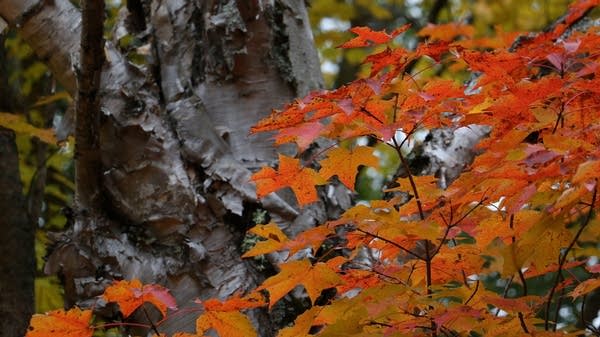Climate curious: What are the best carbon-capturing trees to plant?

Colorful maple leaves contrast against a birch tree in the background on Oberg Mountain near Tofte, Minn., last year. Forestry expert Eli Sagor says planting a variety of fast-growing trees, like maples and oaks, can help contribute to the fight against climate change.
Andrew Krueger | MPR News file 2018
Go Deeper.
Create an account or log in to save stories.
Like this?
Thanks for liking this story! We have added it to a list of your favorite stories.


